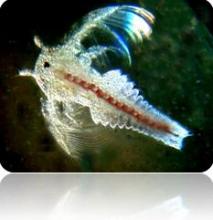Data provider
Budapest University of Technology and Economics, Department of Applied Biotechnology and Food Science, Environmental Microbiology and Biotechnology Group
Contact details
Compulsory sheet
Information on the method
Measured endpoint
Description of the measurement technique
Measuring range
- Other organic chemical substance
Implementation conditions
Implementation costs
Innovation, main features
A teszt újdonsága a nagyon érzékeny, édesvizekben élő tesztorganizmus a Thamnocephalus platyurus. Tesztelésre ennek a mikrorák fajnak a 24 órás lárváját használjuk.
Általában szennyezett felszíni vizek, felszín alatti vizek vagy vízben oldott vegyi anyagok tesztelésére.
Függ az eredmény a környezeti tényezőktől. Figyelni kell a tesztelendő víz paramétereit: oldott oxigén koncentráció, vízkeménység, vezetőképesség, pH. Ha ezek nem megfelelőek a mintát addig kell hígítanunk, míg a körülmények megfelelőek a tesztállatnak, mert meghamisíthatja a teszt eredményét, ha a tesztállat nem a minta szennyezőanyag-tartalmától pusztul el, hanem a nem megfelelő körülményektől.
Vegyi anyag hatásának vizsgálatakor korlátozó lehet a vegyület vízoldhatósága.
24 órás expozíciós idő után meghatározzuk az mozgásképtelen kisráklárvák számát.
SWOT (evalaution based on scores)
SWOT (evaluation in words)
Rutinszerűen alkalmazható.
Előre elkészített egyszerűen használható teszt kitek is kaphatóak, melyek használatához nem szükséges laboratórium.
Figyelni kell a környezeti tényezőkre. Érzékeny tezstorganizmus. A tesztorganizmus szaporítása nagyon nehézkes és szakmai gyakorlatot igényel.
A szabványosított módszer mellett létezik a teszt gyorsabb változata, ahol a teszt mérési végpontja az, hogy az állat táplálkozik-e.
Ezt a módszert a 743-as adatlapon ismertetjük.
A nem megfelelő környezeti tényezők meghamisíthatják a teszteredményt.
Other information, references
Különösen érzékeny tesztorganizmusról lévén szó igen kis szennyezőanyag-koncentrációk hatását is mérni tudjuk. Ugyanakkor a nem cél hatások nagy mértékben befolyásolhatják az eredményeket, ezért a szabványos metodika alapvető fontosságú.
Szabvány vagy teszt kit vásárlása esetén a kapott protokoll is alkalmazható. A tesztorganizmus és a teszt-kit beszerzése: http://www.microbiotests.be/
C. Blaise: Canadian Application of Microbiotests to assess the Toxic Potential of Complex Liquid and Solid Media, In : New Microbiotests for Routine Toxicity Screening and Biomonitoring (G. Persoone, C. Janssen and W. De Coen , eds. - Kluwer Academic / Plenum Publishers) 2000, chapter 1 3-12

